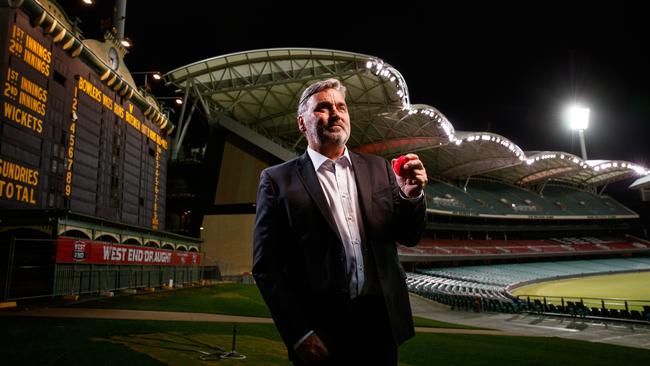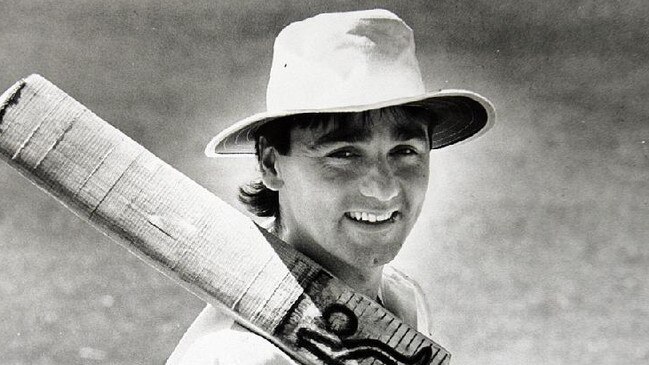Keith Bradshaw: The Aussie who shook up the home of cricket
Keith Bradshaw was once described by Christopher Martin-Jenkins in The Times as “the enemy within”.

Keith Bradshaw was once described by Christopher Martin-Jenkins in The Times as “the enemy within”. Although this was a tongue-in-cheek remark, the employment of a colonial to run Marylebone Cricket Club would have been unthinkable at the time of the Bodyline series between England and Australia that engulfed it in 1932-3 and for decades after.
His appointment in 2006 as the first Australian to take charge of the club was indicative that, although the great rivalry between his country and England was still to the fore on the cricket field, pleasantry prevailed in the Long Room at Lord’s. During his tenure as chief executive and secretary, MCC became a less insular environment, even if it did at times experience some turbulence.
Bradshaw achieved a considerable amount in his five years in the post quite apart from altering outsiders’ perceptions of the club that had run the game for much of its 219 years of existence. He was popular with the members and praised by many of them for trying to expand the increasingly popular Twenty20 format of the game. His attempt to carry through a sweeping £400 million redevelopment of Lord’s, which he felt appeared tired in certain areas, met with a more mixed reception. His plans were aborted amid much recrimination and bad publicity.
The 14th secretary of MCC and a distinguished 11-man development committee were convinced that this rebuilding project was necessary for Lord’s to compete with revamped and emerging Test match grounds. In 2011, however, the club’s chairman, Oliver Stocken, and treasurer, Justin Dowley, threatened to resign if the project went ahead, citing that it was too financially risky. The development committee was disbanded – sacked – and one of its members, the former prime minister Sir John Major, was to resign from the main committee.
Bradshaw, somewhat naive in the ways of administrators in England and wearying of the infighting and the time expended on the redevelopment (in all probability none of his predecessors worked such long hours) decided to leave MCC later that year.

His second wife had returned to Australia, his mother had died and his brother had learning difficulties and required supervision. He himself had suffered from cancer. He was to claim that, had he remained at the club and continued to support the “Vision for Lord’s”, as it was termed, he would have been sacked.
He had been an unexpected choice by MCC’s three-man selection panel when he was appointed. He had played cricket for Tasmania, but with no great success, and subsequently worked as a chartered accountant in Hobart. He had never run any sports institution and came from a very different background to previous secretaries of the club.
Nevertheless, he was an able and energetic man who communicated well with members, administrators, players and the media, and brought the perspective of an outsider to an institution which was often perceived as stuffy. Above all, Bradshaw sought to make Lord’s a more welcoming arena. This he succeeded in doing.
Keith Bradshaw was born in Hobart, the son of Ralph, a television technician and Hazel, a nurse and part-time cricket scorer who had emigrated from England with her parents when she was 18. He was educated at New Town High School and represented Tasmania’s under-16 and under-19 cricket X1s and was offered professional terms as a middle order batsman and medium pacer.
His life, though, was affected episodically by misfortune, particularly ill health, and he found himself having to compete with emerging batsmen such as David Boon, Mark Taylor and Mark and Steve Waugh.
He soon realised that they were more naturally gifted and embarked on an external degree course in commerce at the University of Tasmania. He was given a sports scholarship to play club cricket in England and represented Sidley in Sussex and the county’s second XI as well as Greenmount in Lancashire, where he was befriended by a leading figure in the club, Neville Neville. Bradshaw would happily play backyard cricket with his two sons, Phil and Gary, both of whom would be drawn away from the game to the glamour and riches of Manchester United.
“I reckon both boys could have played Test cricket had football not been the preferred option,” he said. “Phil represented England at junior level at cricket one day and at football the next day. The difference was that at one match he had 200 people watching and at the other there were 20,000.
“What with that and potential greater earning capacity if they made the grade with United, which they did, the choice of career was an obvious one.”
Bradshaw was to make 25 first-class appearances for Tasmania, scoring 1083 runs at 25.78 and taking nine wickets. In 1988 he decided that a career in accountancy would be more profitable.
By the age of 40 he was a partner with Deloitte and appeared to be settled for a long career with the firm. Yet his attributes, enthusiasm and pleasant, open nature attracted him to a firm of headhunters who were seeking a successor to Roger Knight as secretary and chief executive at Lord’s.
When approached, he thought he was being asked to run Melbourne Cricket Club, a short flight away, not Marylebone Cricket Club on the other side of the world.
Bradshaw particularly impressed Robin Marlar and Tony Lewis, both of whom were former MCC presidents and influential voices within the club.
Lewis, a former England captain who was to sit on the development committee, was, however, no property expert: on his watch the disused railway tunnels under the Nursery Ground fell into the hands of a property developer, leading to endless complications over the redevelopment of Lord’s.
Bradshaw believed that this redevelopment, which would have been brought about by a £100 million contribution from the developer, Charles Rifkind, who wanted to build flats over the tunnels, would have safeguarded the future of MCC for generations and would have meant a reduction in the subscriptions of the 18,500 members. He had a trying relationship with Stocken, who once challenged him about reports of young women coming in and out of his grace-and-favour house on the edge of the Lord’s curtilage. Bradshaw responded, angrily, that these were his daughter’s friends.
When Bradshaw returned home, in December 2011, it was to take up a position running the South Australian Cricket Association. Ironically, a redevelopment of the ground at Adelaide was under way, costing a near identical sum. The difference was that, unlike at Lord’s, this was completed. In addition, he staged day-night Test matches in which the pink ball was used.
Bradshaw married, firstly, Louise King, with whom he had two daughters and a son. Juliet works in the jewellery business in Brisbane and Eliza is completing her paramedical course in Tasmania, where Don also lives and at present is unemployed. The marriage was dissolved and he subsequently married Sara Palstra, who believed their grace-and-favour house, previously occupied by Gubby Allen, one of the foremost figures in the game, was haunted. Bradshaw himself believed he saw a ghost there on a separate occasion and claimed that his housekeeper did as well. Palstra-Bradshaw subsequently returned to Australia, where she works as a business development manager. This marriage was also dissolved. Their son, Jack, is at school in Adelaide.
A Bradshaw strength was his ability to defuse a potentially trying topic. Although a certain number of female members had joined MCC by the time he arrived from Australia, he discovered their presence was still an issue.
“A large number of members did not want women in their club. I think they thought it would turn into a glorified cocktail party or something along those lines. Unfortunately that continued to be the mindset of some and manifested itself in the form of subtle but continual complaints.’’
THE TIMES
Keith Bradshaw, cricketer and administrator, was born on October 2, 1963. He died of multiple myeloma on November 8, 2021, aged 58


